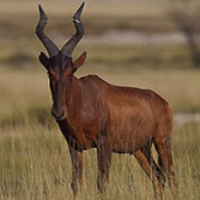Line-transect data may not produce reliable estimates of interannual sex-ratio and age structure variation in West African savannah ungulates

All claims expressed in this article are solely those of the authors and do not necessarily represent those of their affiliated organizations, or those of the publisher, the editors and the reviewers. Any product that may be evaluated in this article or claim that may be made by its manufacturer is not guaranteed or endorsed by the publisher.
Accepted: 23 March 2020
Authors
Adult sex ratios and age structures are important wildlife population parameters, but they have been poorly investigated in ungulate species in West African savannahs. We used line transects to investigate these parameters in 11 ungulates from a protected area in south-western Burkina Faso during the period 2010-2018. We created an empirical model of “detectability” for each species based on its main ecological characteristics (habitat and group size) and body size, and then compared the observed interannual inconsistency in sex ratios and age structures with the a priori detectability score. Six out of 11 species showed low interannual inconsistency in sex ratio and age structure. In 82% of the study species, however, the predicted detectability score matched the observed score, with two exceptions being Tragelaphus scriptus and Sincerus caffer.
How to Cite
PAGEPress has chosen to apply the Creative Commons Attribution NonCommercial 4.0 International License (CC BY-NC 4.0) to all manuscripts to be published.







